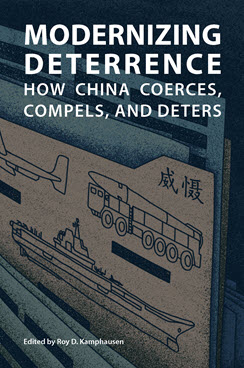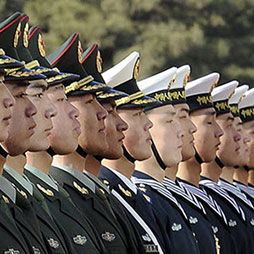Planning for Escalation
PRC Views on Controlling Escalation in a Conflict
This chapter provides an overview of how writings by authors in the People’s Republic of China (PRC) and the People’s Liberation Army (PLA) describe the dynamics and risks of controlling escalation during a military conflict.
EXECUTIVE SUMMARY
MAIN ARGUMENT
PRC civilian and military writings over the last two decades display a shared confidence that conflict escalation can be controlled with the right tools and conditions. Effective escalation control is depicted as resting in large part on a country’s ability to manage uncertainty—suggesting that PLA planners are not risk averse so much as uncertainty averse. This desire to reduce uncertainty rests on the belief that the eruption and progression of crisis and conflict can be forecast, calculated, and managed using systematic and quantitative approaches to evaluate all possible courses of action and eliminate human error. PRC writings on controlling escalation exhibit a number of persistent blind spots with alarming implications. There is scant acknowledgment that operational principles and specific activities the PLA regards as de-escalatory may be interpreted differently by an opponent. It is also unclear how PLA actors would handle a situation that they have not put through the elaborate evaluation process described in these writings. These blind spots could cause Beijing to become overly confident in the PLA’s ability to control escalation in a crisis or conflict.
POLICY IMPLICATIONS
- PRC and PLA decision-makers may overestimate the clarity of their signaling and their ability to accurately interpret U.S. activities. This optimism, combined with divergent views on acceptable uses of force and a persistent PRC confirmation bias about U.S. intentions toward China, could lead to inadvertent escalation.
- U.S.-China discussions about crisis management should identify behaviors that each side considers unambiguously escalatory. While there may be compelling reasons on both sides to maintain a degree of ambiguity about thresholds, each side needs to be aware of divergences that could lead to particularly dangerous misinterpretations.
- As PLA capabilities continue to mature, it is likely that PRC confidence in the ability to control escalation will grow, including a possible reassessment of the controllability of nuclear weapons. This should remain a topic of discussion between the U.S. and PRC, even if Beijing’s official “no first use” nuclear policy does not change.
Alison Kaufman is a Principal Research Scientist in CNA’s China & Indo-Pacific Security Affairs division.
The views expressed in this chapter are the author’s own and do not represent the opinions of CNA or its sponsors.



